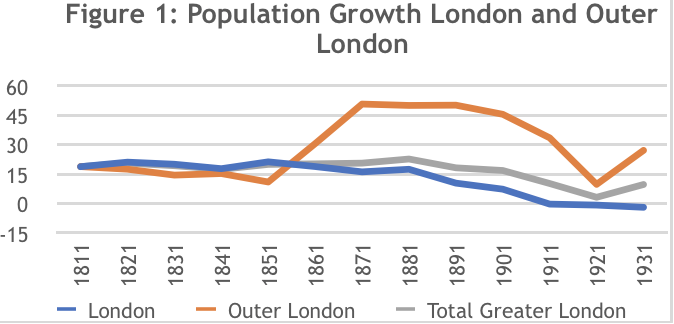Work stops at sunset. Darkness falls over the building site. The sky is filled with stars. “There is the blueprint,” they say. – Italo Calvino, Invisible Cities
Urban planning is best defined by scholars as a form of state intervention in a development process dominated by the private sector. Modern day town planning hinges on three central ideas; physical planning, the importance of design as crucial to town planning and lastly, the idea of following a ‘blueprint’ to the same degree of precision as that of engineers and architects when constructing other human-made structures. It involves a range of strategic players-the government, landowners, developers, politicians and lastly ordinary members of the public. Responding to development pressures over time, all these stakeholders in turn shape the built environment and bring their own perspectives on the built environment-on how cities grow and decline, and how they should be structured and made functional. This makes the subject of urban planning an integration of ideas drawn from political science, economics and sociology.
The realisation that urban areas need to be planned to function and provide basic amenities to the populace has its origins in the era of industrial revolution. Over time other important domestic and global events such as the rapid advances in transportation networks, the Great War, the housing boom and suburbanisation during the interwar period and a more dominant role of the government post WWII have had crucial influences in reshaping the subject. This article aims to delve into the history of town planning in the UK and how it evolved to the form it exists today.

Historians of urban studies trace the evolution of town planning largely to the industrial revolution of the nineteenth century. The industrial revolution in mid to late nineteenth century was accompanied by rapid population growth, boom in business enterprise and public failures in managing the unwanted physical consequences of development. The burgeoning population growth and movement can be evidenced from the fact that in about a century from 1801-1901 the population of England and Wales increased from 8.9 to 32.5 million people. In the first half of the nineteenth century it was inner London which witnessed a great increase in population but in the second half the focus had moved towards outer London (Figure 1). In addition to this, population migration to urban areas led to cramped, damp and insanitary areas. The economic cost associated with deteriorating public health and fear of social unrest led authorities to appreciate the necessity of interfering with market forces and private property rights for the larger interest of societal wellbeing. Hence it was public health and housing policies which led to urban planning falling under the domain of the government.

Source: Haywood, R. (1997). Railways, Urban Form and Town Planning in London 1900-47, Planning Perspectives, 12, 37-69.
Sanitary policy played a crucial role in town planning and when the first Town Planning Act of 1909 was introduced John Burns, president of the Local Government Board highlighted its main objectives in ‘improving the physical health, morals, character and their social condition as a whole’. It also gave local authorities powers to prepare schemes to regulate suburban growth. The first revision of legislation on town planning came about in 1919 through the Housing and Town Planning Act. Some of its crucial aspects were the introduction of state subsidies for housing and subsequent growth in the nationwide movement for council house estates and standard blueprints for working class homes.
These new measures ensured that their implementation could only take place on lands outside the periphery of towns and hence led to suburbanisation which still exists today. The interwar period witnessed a huge boom in housebuilding; about 1.4 million houses were completed of which 62% were new dwellings in rural England and Wales. Advances in road and rail transport networks resulted in these residential, commercial and industrial dwellings to be more widely spread out relative to dense nineteenth century urban development.
The 1925 Town Planning Act separated housing from planning as an area of public concern. This was the first time that land planning exclusively to itself. Up until the 1925 Act it was only the suburban areas that planning control could make its presence felt. The Town and Country Planning Act of 1932 extended its domain to congested central areas. This important piece of legislation widened its scope and became applicable on any type of land-built-up or undeveloped. The wider inclusion of land under the Town and Country Planning Act of 1932 led the Council for the Preservation of Rural England (now known as the Campaign to Protect Rural England (CPRE)) to pass the Ribbon Development Act of 1935 which was designed to control the spread of development along major roads. Two short acts were passed in 1943 which made town planning schemes obligatory and brought an end to the local character in all these schemes as a role was created for a Minister for Town and Country Planning.
Post Second World War there was a growing realisation amongst western democracies including the UK of a more active and interventionist role of the state. This was to ensure large-scale rebuilding and planning of towns and cities, as well as to help reorganise industry. The New Towns Act of 1946 was passed which brought almost all development under control by making it subject to planning permission. A year later, after drawing from several previous commissions such as the Barlow Report of 1940, Scott Report of 1942, Uthatt Report of 1942, and the Coalition Government’s White Paper on the Control of Land Use of 1944, the Town and Country Planning Act of 1947 was enacted. This is the legislation which forms the foundation of modern day town and country planning in the UK. It enacted that ownership alone no longer conferred the right to develop the land and that planning permission was essential for land development. It nationalised development values in all lands and kept within its domain financial provisions relating to compensation and betterment of land. The latter were dealt with more comprehensively in the subsequent Town and Country Act of 1954.
The urban planning legislations are crucial in regulating the development and use of land in public interest. The primary concerns of the planning system is to determine what development is appropriate, how much is desirable, where it should be located and what does it look like. The crucial importance of planning law and its implementation has also been advocated by the UN Habitat Global Report on Human Settlements which declared that the persistence of outdated planning systems is a major blockage to address the problems of growing and poor cities. Urban planning is crucial for a more inclusive and sustainable society.







